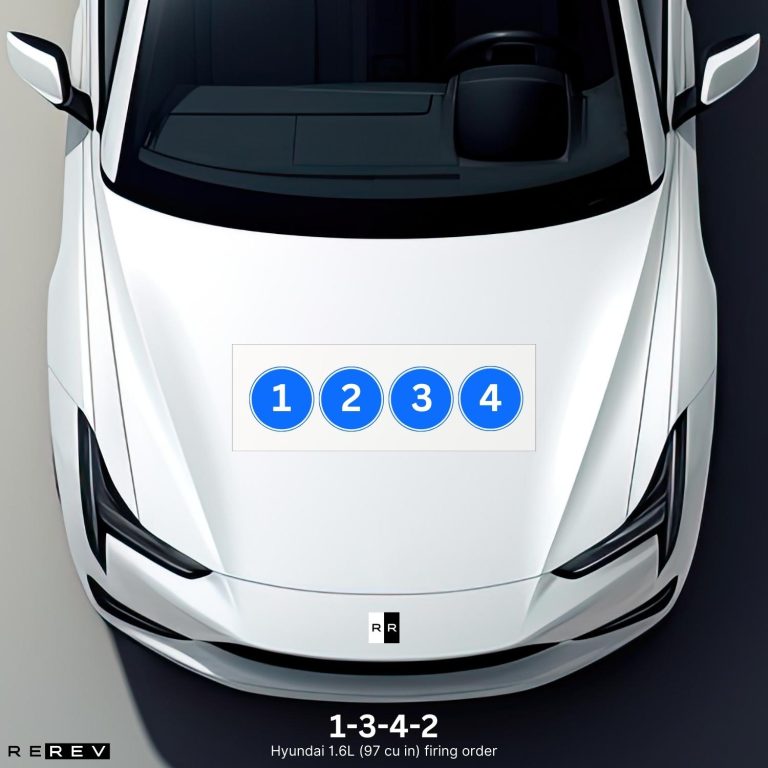Hyundai 1.6L (97 cu in) firing order — diagram & guide
Maximizing efficiency with the Hyundai 1.6L firing order.

Among all the four-cylinder engines in Hyundai’s lineup, the 1.6-liter made one of the most commonly used options. It came in different variants including the Flex-Fuel one with variable valve timing, the turbocharged one, and a regular naturally aspirated 1.6L.
Still, all those versions confused drivers regarding the Hyundai 1.6L (97 cu in) firing order and left many wondering if it’s the same for all these variations. Since the firing order can be a significant factor when it comes to the vehicle’s maintenance, our team has decided to give you a few hints in this all-around guide.
Hyundai 1.6L firing order
So, the first thing you should know is that the Hyundai 1.6L firing order is 1-3-4-2. Why is this relevant, you may ask? Well, the engine had some issues with increased oil consumption, especially in the GDI turbocharged version, as well as frequently wearing off of the spark plugs.
If you like to do things the old-fashioned DIY way, the firing order of the engine is your ticket to solving all these issues. Not only can you check the engine’s cylinders and see if any of them are misfiring, but you can also inspect the spark plugs and ignition coils yourself.
All it takes is to follow the firing order and first check cylinder number one, proceeding with cylinders 3, 4, and 2. You can do this once you get to know the cylinder displacement in the engine, which is what we’ll focus on in the next section.
Hyundai 1.6L cylinder diagram

The next key thing to note here is the cylinder layout of this engine and it’s pretty simple to use the firing order on this one. The straight-four configuration means the cylinders range from 1 to 4 in a straight line from left to right.
So, the first cylinder is the left-most one near the crank pulley at the front of the engine and it’s easy to access it. That’s a start when using the firing order so you can proceed with the cylinders 3, 4, and finally the second one according to the firing order.
Hyundai 1.6L vehicle applications
Now that we’ve gone through all the important facts, it’s time to focus on vehicle models that have the Hyundai 1.6L engine under the hood. So, here’s a full list of both the turbocharged GDI engine and the regular VVTi 1.6-liter engine vehicles:
- Hyundai Elantra
- Hyundai i30
- Hyundai Veloster
- Hyundai i20
- Hyundai Avante
- Hyundai Tucson
- Hyundai Kona
- Hyundai Sonata
- Hyundai Mistra
Along with these Hyundai vehicles, the same engine was also used in a few KIA models like the Ceed, K4, Forte, Optima, and Sportage.
Our take
Overall, the 1.6-liter engine’s configuration and firing order are simple enough for every enthusiast to apply to work on their engine. So, we hope to at least have helped with that for a tiny bit with this guide as now you’ll have all the main details and instructions to get going.